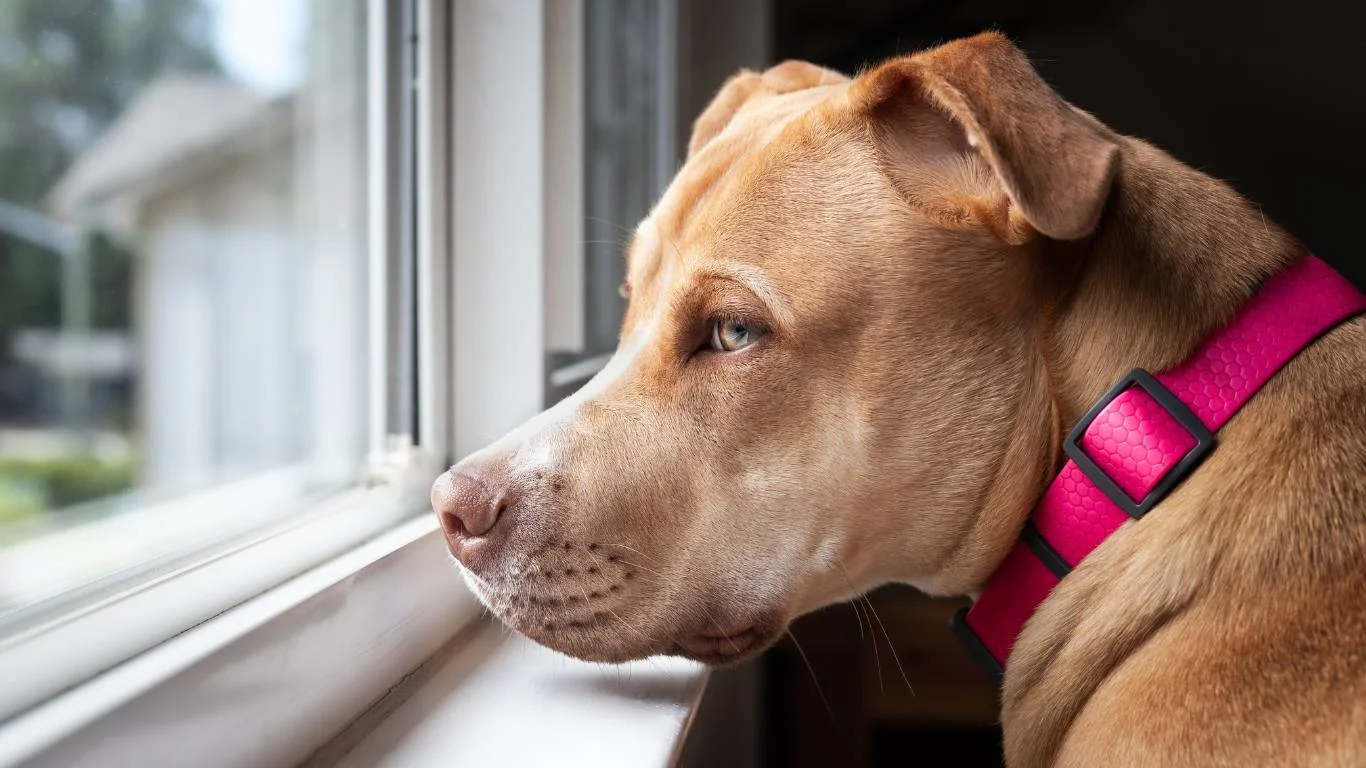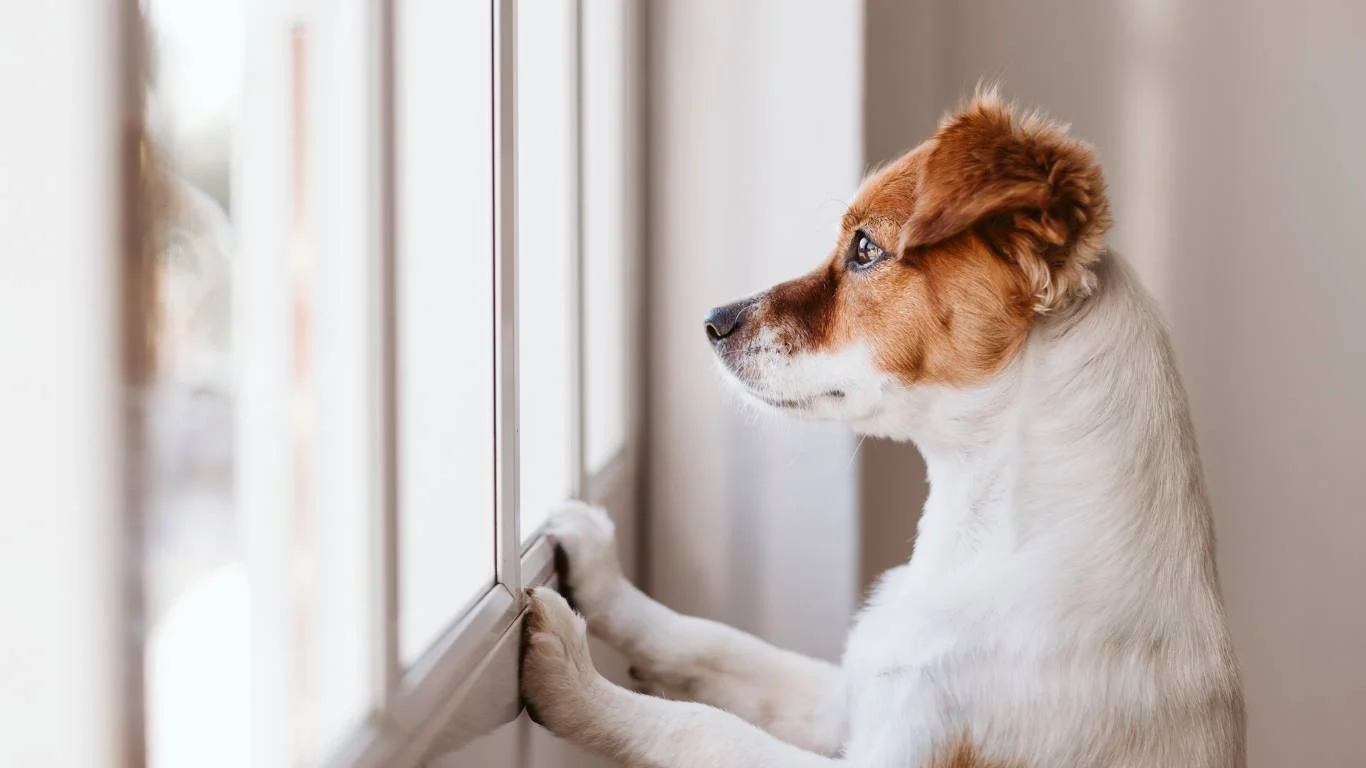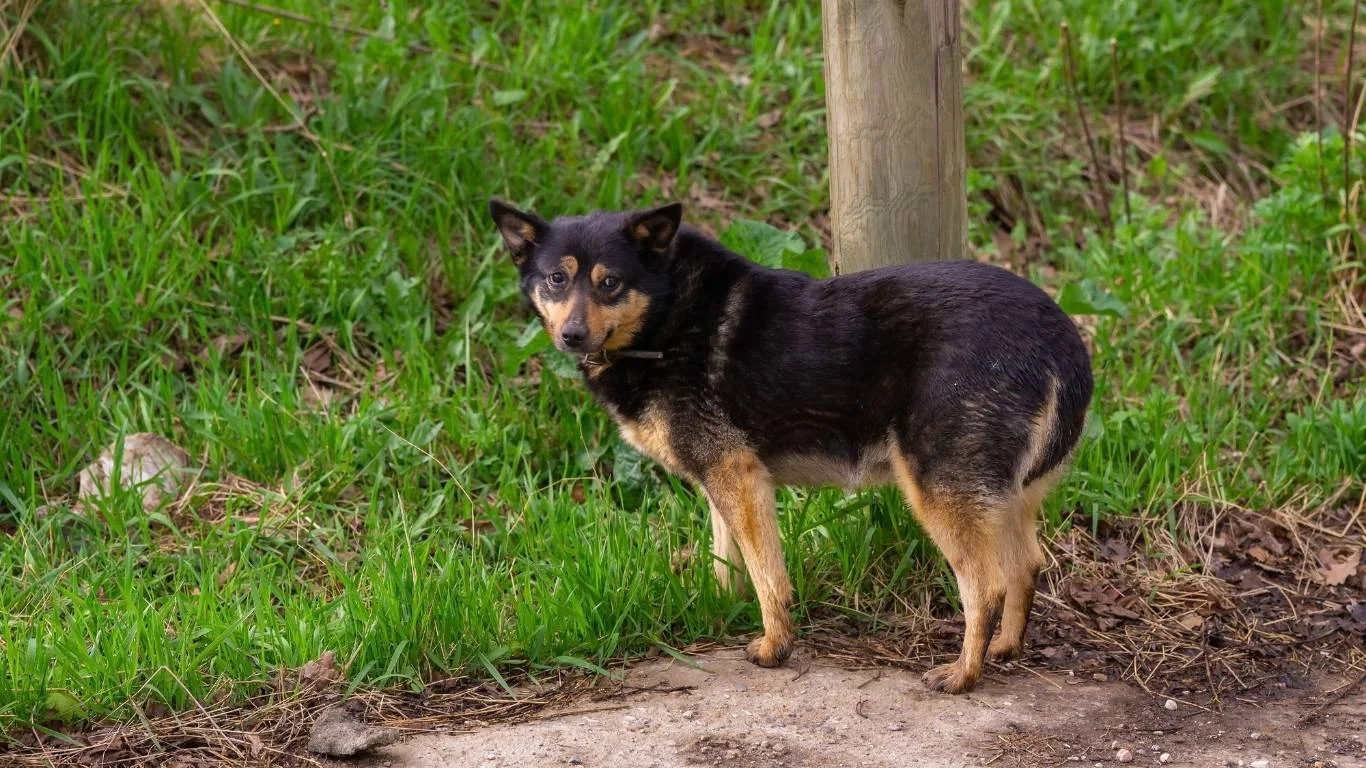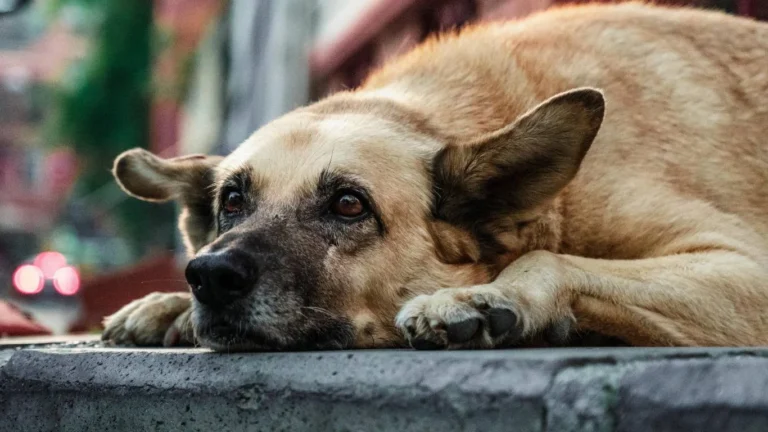What to Do If Your Dog Has Bloodshot Eyes: Urgent Tips That Work
If you’re here frantically Googling what to do if your dog has bloodshot eyes, take a breath—you’re in the right place. I’ve seen this countless times working as a Veterinary Assistant, especially with a nutrition focus. Bloodshot eyes in dogs can look scary (and trust me, I’ve had plenty of panicked pet parents rush in over it), but the cause can range from totally harmless to needing quick medical attention. In this post, I’ll walk you through the common causes, what to watch out for, and when you should actually be concerned.
Why Are My Dog’s Eyes Bloodshot?

Alright, let’s get into it. First off, “bloodshot” just means the whites of your dog’s eyes—called the sclera—have turned red or pink due to enlarged or irritated blood vessels. That can be from a lot of different triggers.
Common Causes of Bloodshot Eyes in Dogs
In my hands-on experience, these are the top reasons I’ve seen dogs come in with red eyes:
- Allergies: Seasonal or environmental allergens like pollen, dust, or even certain foods can trigger inflammation.
- Dry Eye (Keratoconjunctivitis Sicca): This is super common, especially in breeds like Shih Tzus and Bulldogs. The tear glands don’t produce enough moisture, so the eye gets irritated.
- Conjunctivitis: Also known as pink eye—yep, dogs get it too. It could be bacterial, viral, or from irritants like smoke or shampoo.
- Trauma or Foreign Object: Sometimes it’s as simple as a piece of grass or dirt getting in there while your dog’s zooming through the backyard.
- Glaucoma: This one’s serious. Increased pressure inside the eye can cause redness, pain, and even blindness if not treated quickly.
- Uveitis: Inflammation inside the eye—can be due to infection, immune issues, or trauma. Definitely a vet-visit situation.
When a pet parent brings their pup in and the eyes are red, the first thing I do (after calming them down) is check for pain, discharge, cloudiness, or sensitivity to light. These clues help narrow down what’s going on.
What to Do If Your Dog Has Bloodshot Eyes (Initial Home Steps)

Okay, so you’ve just noticed your dog’s eyes are red. Here’s what you can do right away—before heading to the vet or freaking out:
- Stay calm and keep your dog calm. Stress or struggling can make symptoms worse. Gently restrain your pup if needed, but don’t force anything.
- Check both eyes. Is it one or both? Is there any squinting, pawing, or discharge? These details matter.
- Flush with sterile saline. If you have some dog-safe eye wash or even human-grade sterile saline, rinse the eye gently. This can help remove dust or irritants.
- Look for any debris or scratches. You don’t need to go full vet-mode, but if something is obviously stuck or you see a scratch, stop and call your vet.
- Take note of any other symptoms. Lethargy, loss of appetite, sneezing, coughing? These can clue you in on whether it’s part of something bigger.
Now, if the redness goes away after a saline flush and your pup is acting totally normal, awesome. Still, keep an eye (no pun intended) on it. Sometimes the real issue crops up later. I always tell clients: if something looks off today but still seems off tomorrow, that’s your cue to call the vet.
When to Call the Vet Immediately
Here’s when I’d say don’t wait it out:
- Eye is bulging or looks cloudy
- Heavy discharge—especially green or yellow
- Your dog is squinting or can’t open the eye
- There’s visible swelling or you notice pawing/rubbing
- Changes in behavior—like hiding or yelping when touched
I had a client come in once with her Cocker Spaniel who had a red eye for three days. She figured it was just allergies. Turned out to be glaucoma, and he was in serious pain. We managed to get him on meds, but it was a close call. If there’s one thing I’ve learned in this job, it’s never ignore what your dog’s eyes are trying to tell you.
Nutrition and Eye Health: Yes, It’s Connected

Here’s where my nutrition background really comes into play. You’d be surprised how often diet ties into eye issues. I’ve seen pups on poor-quality kibble show more inflammation, dryness, and yes—bloodshot eyes. Certain nutrients are vital for eye health:
- Omega-3 fatty acids: Found in fish oil, they reduce inflammation and support tear production.
- Vitamin A: Crucial for vision and immune response—carrots aren’t just good for bunnies!
- Lutein and Zeaxanthin: These are antioxidants that help protect eye tissue, often found in leafy greens and some dog supplements.
One thing I often recommend is switching to a high-quality food formulated for sensitive systems or skin/coat support. Those typically have the nutrients needed to back up eye health too. And don’t forget hydration—a hydrated dog is a healthy-eyed dog.
How Breed and Age Affect Bloodshot Eyes in Dogs

Let’s talk specifics, because not all dogs are built the same—literally. In my years assisting in a busy vet clinic, it became super clear that certain breeds and age groups were more prone to red, irritated eyes. If your pup falls into one of these categories, it’s worth being extra watchful.
Flat-Faced Breeds Are Eye Issue Magnets
Breeds like Pugs, Shih Tzus, French Bulldogs, and Boston Terriers are adorable, no question. But that smooshed face (known as brachycephalic anatomy) comes with a trade-off. Their eyeballs actually protrude more than other dogs, making them vulnerable to dust, wind, dry air, and trauma. I remember a sweet Frenchie named Waffles who practically lived in goggles because his eyes were so sensitive—it helped a ton, actually!
For these breeds, even something as simple as wind during a car ride can cause irritation. Their tear production is often below average too, which means more inflammation and—you guessed it—bloodshot eyes.
Senior Dogs and Age-Related Changes
As dogs age, their bodies shift, and that includes their eyes. Older dogs often experience decreased tear production, slower healing, and even subtle shifts in immune response. That’s why I always ask clients, “How old is your pup?” as soon as they mention eye issues.
Red eyes in a senior dog could be a sign of chronic dry eye, early cataracts, or even underlying health problems like diabetes or hypertension. If your older dog’s eyes suddenly go red, don’t chalk it up to age—get it checked out.
What Not to Do If Your Dog Has Bloodshot Eyes

Here’s where a little tough love comes in. I’ve seen well-meaning dog parents do some things that—let’s just say—don’t help. If your dog has bloodshot eyes, here are a few things you should absolutely avoid doing:
- Don’t use human eye drops. Seriously, just don’t. Most human eye meds aren’t safe for dogs and can even make things worse. Unless your vet specifically says otherwise, skip it.
- Don’t delay care if it gets worse. If your dog’s eye starts out mildly red but progresses to swelling, squinting, or discharge, that’s not something to “wait and see” about. I’ve seen too many infections escalate fast.
- Don’t assume it’s “just allergies.” Yes, dogs get allergies—but not every red eye is allergy-related. I had a patient whose owner gave Benadryl for a week thinking it was seasonal allergies, but it was actually a scratched cornea. Ouch.
Also: Stop Googling and Guessing
Look, I get it—Google’s convenient. But the internet can’t see your dog’s eye up close. I always say: when in doubt, let a vet (or vet tech) take a look. Most clinics even let you send a photo first to get an idea of how urgent it is.
Vet Diagnosis: What to Expect at the Clinic

If you’ve made the decision to bring your dog in—and honestly, that’s usually the right call—here’s what’s likely to happen at your vet visit. Understanding the process helps ease anxiety, both for you and your pup.
Eye Stain Test
This is the biggie. The vet (or assistant—yep, that was me plenty of times!) will apply a fluorescein stain to the surface of your dog’s eye. It glows under a blue light and shows scratches, ulcers, or damage. If your dog has been rubbing or got poked in the eye with a twig? This will reveal it.
Intraocular Pressure (IOP) Test
This test checks for glaucoma. We use a tool called a tonometer—non-invasive, quick, and most dogs don’t mind it. I’ve seen plenty of pups sit perfectly still while we do it, especially if there’s a treat involved afterward.
Schirmer Tear Test
This measures how much your dog’s eyes are actually producing tears. It’s essential for diagnosing dry eye (KCS). We use a tiny paper strip placed gently under the lower eyelid. If the reading is low, treatment might involve daily eye drops or ointment.
Other Possible Checks
- Full-body exam to rule out systemic causes
- Blood work if something internal is suspected
- Referral to a veterinary ophthalmologist in complex cases
Once we know what we’re dealing with, your vet will lay out a treatment plan. Sometimes it’s just a rinse and go. Other times, you might be looking at antibiotics, lubricating drops, or even long-term meds.
Building a Routine to Prevent Eye Issues
One of the biggest takeaways I try to share with pet parents is this: most eye issues aren’t one-and-done. Especially with chronic dry eye, allergies, or breed-related problems, you’ve got to be proactive.
Simple Eye Care Tips That Make a Big Difference
- Wipe your dog’s eyes daily with a soft, damp cloth. This clears away debris and allergens.
- Keep hair trimmed around the eyes to prevent irritation. I’ve seen so many Shih Tzus come in red-eyed just from pokey bangs!
- Use vet-recommended lubricating drops if your dog has dry eyes.
- Limit exposure to wind, dust, and smoke—especially for flat-faced breeds.
- Invest in eye protection for sensitive pups—yes, dog goggles are a thing, and they work.
Prevention might feel like “extra,” but it’s a whole lot cheaper and easier than treating a full-blown eye infection. Trust me, I’ve cleaned out enough infected tear ducts to know it’s not fun for anyone involved—especially the dog.
Managing Chronic Red Eye Issues in Dogs

Sometimes, red eyes in dogs aren’t a one-time deal. They can become a recurring issue—and that’s when things shift from “quick fix” to “long-term management.” I’ve worked with a lot of pet parents who have dogs dealing with chronic eye conditions, and I promise, with the right routine and support, it’s manageable. It might take a bit of trial and error, but you don’t have to feel helpless.
Common Chronic Eye Conditions That Cause Bloodshot Eyes
- Keratoconjunctivitis Sicca (Dry Eye): This one’s at the top of the list, especially in breeds like Cocker Spaniels, Bulldogs, and Lhasa Apsos. If your pup isn’t making enough natural tears, inflammation builds up fast, leading to persistent redness.
- Chronic Allergies: Some dogs are allergic to just about everything—grass, dust mites, even certain foods. I’ve had clients keep a log of flare-ups and it helped connect the dots to seasonal triggers.
- Entropion: That’s when the eyelid rolls inward, causing the lashes to rub against the cornea. Ouch. Some cases need surgery to correct it, especially if the irritation keeps coming back.
- Immune-mediated conditions: In rarer cases, autoimmune diseases can affect the eyes, causing recurring inflammation. These usually need to be managed with meds long-term.
If your vet mentions any of these, don’t panic. The key is setting up a consistent eye care plan at home and staying on top of vet rechecks. I’ve seen dogs who needed daily drops for years and still lived totally happy, zoomie-filled lives.
Supplements and Natural Aids for Eye Support

Alright, let’s talk about the nutrition side again—because I can’t help myself! I’ve seen firsthand how adding the right supplements can make a noticeable difference in a dog’s eye health. While nothing replaces vet care, these additions can seriously help if your dog is prone to bloodshot eyes.
Top Supplements I Recommend
- Omega-3 Fatty Acids: Great for reducing inflammation. I’ve had clients use fish oil capsules or liquid (just make sure it’s dog-safe—some human ones contain additives).
- Lutein: This antioxidant supports retinal health and may protect against age-related eye issues. Found naturally in leafy greens and included in many eye support chews.
- Vitamin E: Works hand in hand with Omega-3s to combat oxidative stress in eye tissues.
- Probiotics: Might sound unrelated, but gut health is deeply tied to immune function. I’ve seen dogs with fewer allergy flares once we got their digestion balanced.
There are also full-spectrum dog supplements formulated specifically for eye health. Brands vary, so definitely ask your vet for a recommendation that suits your dog’s needs and age.
Building a Vet-Approved Eye Care Routine
If your dog has had red eyes more than once—or has been diagnosed with a chronic condition—it’s time to build a solid, consistent routine. Here’s a checklist I often give clients to help them stay ahead of flare-ups:
- Daily Cleaning: Wipe the area around the eyes gently with a damp cloth. Some owners use vet-approved eye wipes too, which are super convenient.
- Scheduled Eye Drops: Whether it’s lubricating drops, prescription meds, or allergy relief—set reminders and stay consistent. Missing doses can lead to setbacks.
- Track Symptoms: Jot down when redness shows up, if there’s a weather change, diet change, or exposure to allergens. Patterns help your vet tailor care.
- Recheck Appointments: Even if symptoms are under control, regular vet visits help catch issues early before they worsen.
One trick I’ve picked up over time: make eye care part of a positive routine. Give your pup a treat or a belly rub after their drops. Most dogs come around quickly when they know something good follows.
When Red Eyes Signal Something More Serious
I hate to end on a heavy note, but I’d be doing a disservice if I didn’t mention this—sometimes red eyes point to deeper problems. It could be an early sign of systemic disease or internal infection. If your dog’s eye redness comes with other symptoms like lethargy, appetite changes, or odd behavior, it’s time to look deeper.
Red Flag Symptoms to Never Ignore
- Bulging eye or sudden vision loss
- Unequal pupil sizes
- Chronic eye cloudiness
- Behavioral changes like bumping into things
- Eye that looks sunken or protruding more than usual
In one case I remember, a Labrador came in with what looked like basic conjunctivitis, but something felt off. Turns out, it was a sign of systemic hypertension. Once his blood pressure was managed, the eye symptoms improved. It’s moments like that which remind me how connected everything in the body really is.
Final Thoughts on Eye Health and Being a Proactive Dog Parent
If you’ve stuck with me this far—thank you. Caring for a dog with eye issues takes time, patience, and a little detective work. But trust me, it’s worth it. Your pup is counting on you to notice the little things and take action. And if I can leave you with one last piece of advice?
Trust your gut. If something feels off with your dog’s eyes—even if it’s subtle—it’s always better to be safe than sorry.
References
Disclaimer
This article is based on my experience as a Veterinary Assistant with a focus on canine nutrition. It is meant for informational purposes only and does not replace professional veterinary advice. If your dog is showing signs of discomfort, illness, or sudden changes in behavior, consult your veterinarian as soon as possible.





